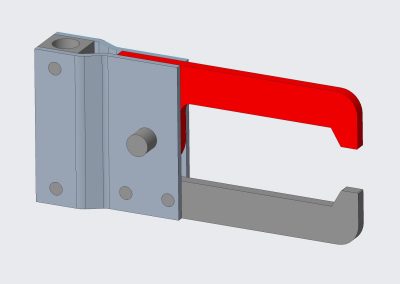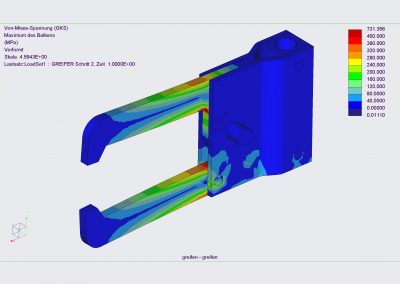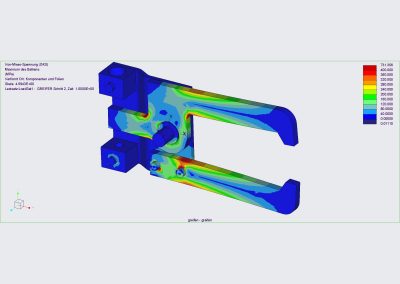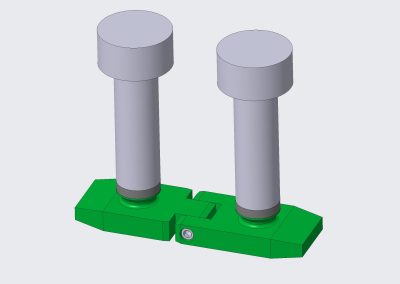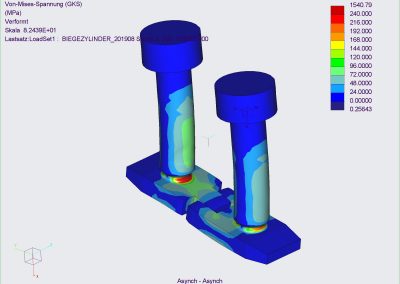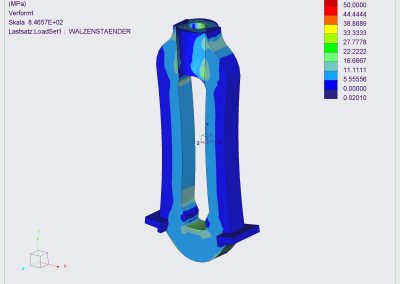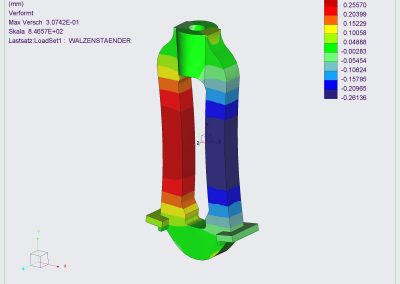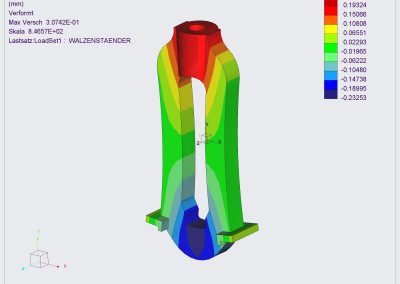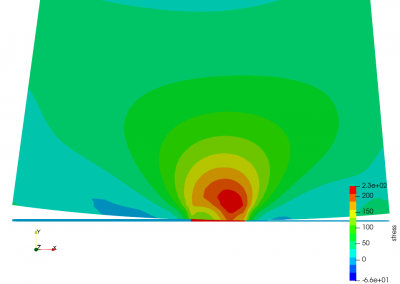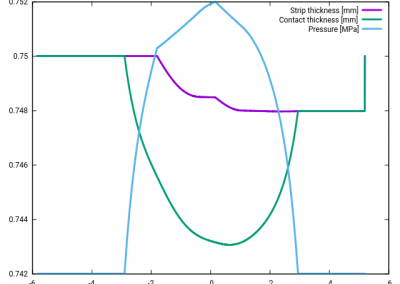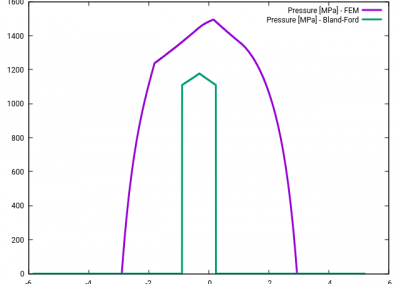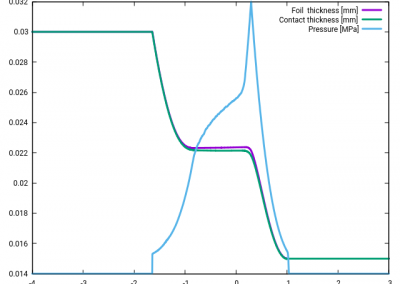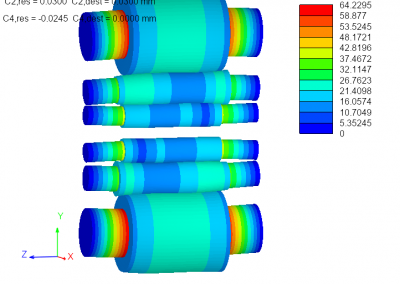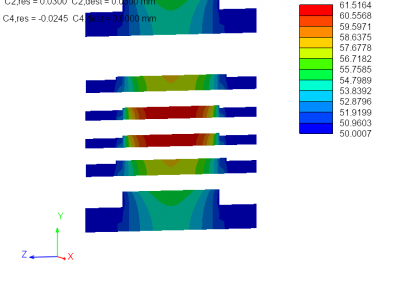FEM: Strength & fatigue analysis
With our vast experience in this area we can contribute to your designing process, deliver state-of-the-art proofs of strength for your machines and assist in damage root cause analysis. We use modern CAD and FEM systems which are able to process almost every kind of input model data. For stress assessment of both bulk material and weldings we use the FKM guideline. Other codes for special applications (VDI 2230, DIN EN 13445…) are available.
Gallery
Roboter manipulator: CAD model and equivalent stress in nominal operation mode. Standard static and fatigue assessment with FKM guideline for steel or aluminium parts.
Piston rods with synchronization in a roll bending system. The equivalent stress distribution for asynchronous operation is computed.
Rolling mill stand: Equivalent stress and deflections at 10 kN/mm roll gap force for choice of tolerance values in bearing guidings.
FEM: Simulation models for special applications
Out portfolio includes professional FEM software development for special applications where commercial (all-purpose) systems are not suitable. We have a vast toolkit of FEM, FVM and numerical software which can quickly be adapted to many complex problems and embedded in a superordinate software system. By using GPU acceleration techniques we greatly reduce computation times and even meet the strict demands of productive automation (Level 2-) software.
Gallery
An elastic-plastic roll gap simulation module which is part of our rolling mill software. This model also includes a contact algorithm, a temperature solver and static condensation for computational acceleration. This complex method is needed to overcome the limits of classic Bland-Ford based approaches (see comparison figure) e.g. for foil rolling or skin pass mills – here the behaviour of the strip material is not longer fully plastic (i.e. the elastic part cannot be neglected); meanwhile, the elastic deformation of the work roll is no longer a circular form.
The prediction of the elastic deformation of the roll stack is an essential feature to optimize rolling mill operation. Besides the process forces the induced heat flux has significant influence on the deformation; thus a non-steady state temperature simulation is coupled to the elastic analysis. The various actuators of the rolling mill are taken into account to control the effective roll gap form accurately. Check out our roll flatness simulation system.

